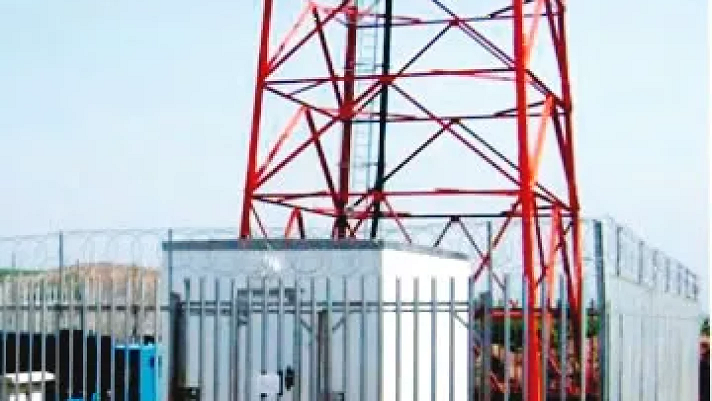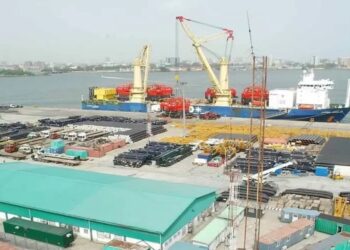The need to provide and improve quality of service and customer experience is among the factors necessitating telecommunication network operators to continue to invest and expand their infrastructure and facilities.
The demand for telecoms services as a result of increasing penetration of smartphones, uptake in broadband usage and digital migration, being fuelled by the rapid impact of technology, is also another important factor.
Base Transceiver Stations (BTS) commonly referred to as base stations, rank high among the essential telecoms infrastructure that are enabling fast and reliable voice and data transmission, as well as supporting various applications including video streaming, online gaming and Internet of Things (IoT).
But due to persistent concerns about the potential environmental and health risks, and other risk factors people have of base stations, despite that extensive scientific and medical research has not conclusively established any harmful health or environmental risks, the need for telecoms operators, infrastructure providers and other stakeholders to be more aware of the impact of their activities cannot be over-emphasised.
More so, the increasing effects of climate change on human lives, ecology and marine ecosystems raises the stake for players in the nation’s telecoms sector to redouble commitment to environmental sustainability, especially in view of the recent media reports that American Tower Corporation (ATC) has a plan to build new base stations within areas that we already have BTS sited by other infrascos such as IHS Towers and Helios Towers.
The Federal Government as part of proactive measures to safeguard the environment set guidelines for the installation of BTS sites to ensure the safety of people and the environment. The guidelines stipulate, among others, that BTS should be installed within a certain range of safety parameters within a given location for the safety of the environment and the people within that location.
Specifically, the telecoms industry regulator, the Nigeria Communications Commission’s (NCC) technical code and specifications on telecommunications equipment and facilities stipulate that “operators shall take all reasonable steps to protect the safety of persons, property and the environment in connection with the installation of their facilities.”
NCC Guidelines on Technical Specifications for the Installation of Telecommunications Masts and Towers of 9th of April 2009, mandate telecoms services providers and infrastructure companies to ensure health and environmental safety, and sound engineering practices at BTS sites.
Section 9(9)(c) of the guidelines provides that the distance for the setback of towers shall be five metres from any demised property excluding the fence. The guidelines also provide that “all generators within a base station must be sited five metres away from all demised properties excluding the fence. Also, all towers sited within residential areas must conform to the setback stipulated in the guidelines to mitigate the effect of heat, smoke and noise pollution arising from generating sets.”
The National Environmental Standards and Regulations Enforcement Agency (NESREA), a federal agency responsible for the enforcement of environmental standards, rules, regulations and policies, also prescribed the guidelines for telecoms and broadcast operators with regards to environmental safety-compliance of facilities.
The NESREA (Standards for Telecommunications and Broadcast Facilities), Regulations 2011, among others, in Section 5(4)(1)(b) stipulate that “all new facilities shall have a minimum setback of 10 metres from the perimeter wall of any premises to the base of the mast/tower.” MTN Nigeria has had its base stations sealed in the past for installing at a setback of 1.2 metres, a far cry from the stipulated industry requirements.
To further underscore how critical the safety of lives and the environment are, Section 20 of the 1999 Constitution of the Federal Republic of Nigeria (as amended) empowers state governments to enforce environmental protection. Section 20 states inter alia: “states shall protect and improve the environment and safeguard the water, air, forest and wildlife of Nigeria.”
The letter and spirit of these laws is that telecoms operators and infrastructure companies cannot install BTS in a manner that endangers and harms Nigerians and the environment. By inference, situating more than one BTS within the same locations poses potential environmental and health risks for Nigerians.
Congestion of base stations will increase the noise levels within the affected communities. Each BTS, by law, operates under an upper limit of noise, within a given location. Situating more BTS within that location aggregates the contribution of noise by BTS in that location, thus exceeding the upper limits of permissible noise leading to noise pollution.
Reduction in air quality is likely. Each BTS operates within boundaries of permissible release of gas waste into the environment. Having more than one BTS within the location will decrease the air quality due to increase in gas pollutants. The impact on soil is another risk. With the addition of more than one BTS in a given location, the pH of the soil within the location will be altered.
Another environmental risk factor is that additional base stations will require more land, power, and resources. This can contribute to habitat disruption, increased energy consumption, and a greater carbon footprint, impacting the environment.
Situating more than one BTS in a location could aggravate fear and concerns people have about the potential health risk factors associated with base stations. Although it has not been scientifically or medically proved, it is generally believed that increased exposure to radiofrequency electromagnetic field (RF-EMF) can potentially lead to health concerns including electromagnetic hypersensitivity or other long-term health impacts.
Other associated risks include low quality of service, including poor connectivity. Congested base stations can result in poor network performance, leading to dropped calls, slow data speeds, and unreliable connectivity. This can hinder economic productivity and social communication, affecting various industries and individuals who depend on a reliable network.
Facility congestion often requires further infrastructure development, which can impact a strain on local resources and utilities. This includes installing more towers, cabling, and power sources, potentially increasing visual and environmental impacts.
Telecom operators themselves may incur higher operating costs managing and expanding congested networks. These expenses could be passed on to consumers through increased service fees. Congestion can also exacerbate the digital divide, as underserved and unserved communities may have limited attention. This can hinder socio-economic development and limit educational and economic opportunities in those communities. In nutshell, the potential health and environmental risks, coupled with other socio-economic risks resulting from congestion of telecoms base stations cannot be downplayed.
Hence, instead of creating new base stations that can lead to the congestion of the existing BTS sites across the country, any telco or infrasco planning to invest in the sector should ensure such investment complements efforts by operators to mitigate congestion and improve network efficiency. In other forward-looking markets, operators are optimising base station placement and equipment upgrade by expanding to areas that are underserved and unserved to ensure wider coverage.
Stakeholders in the Nigerian telecoms sector should also emulate operators in other climes by investing in advanced technologies and research into innovative solutions that can help address day-to-day challenges that Nigerians face, including access to affordable quality telecoms services.
Olawale Jimoh, an Health and Safety Advocate is based in Abuja





